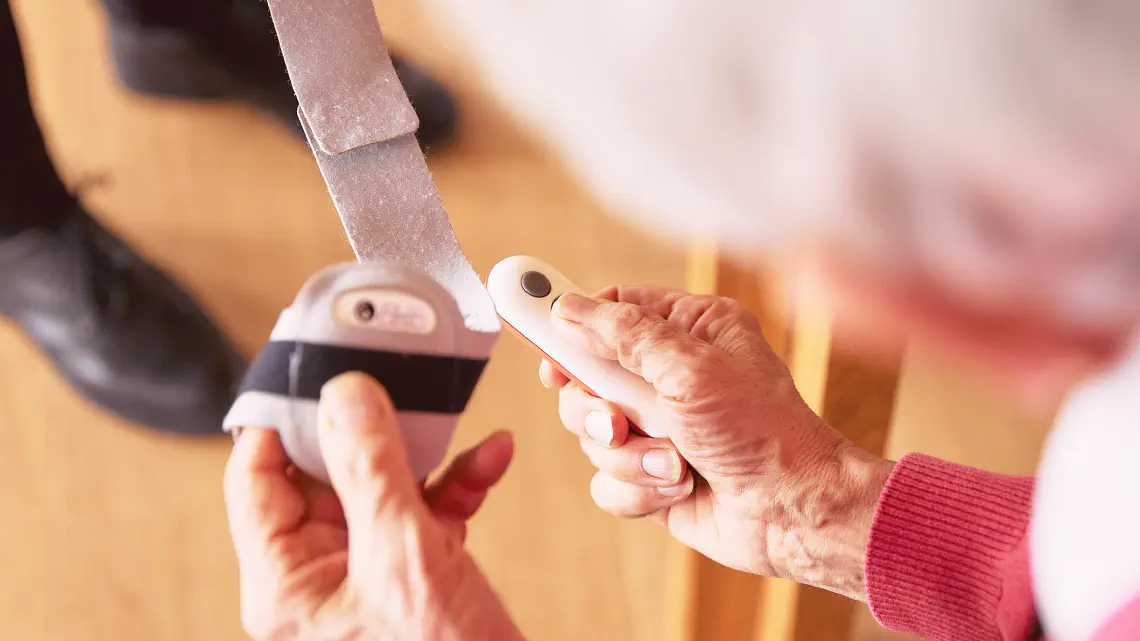You might be wondering, what exactly is cueing and how it impacts Parkinson’s? Cueing involves using external prompts to improve motor function, particularly in tasks such as walking, by engaging alternative pathways in the brain. In a previous blog post, we covered the basics of cueing and its link to Parkinson’s. Today, we’ll dive deeper into the science behind cueing.
gaitQ’s commitment to harnessing the science behind cueing is core to our mission.
Understanding Parkinson’s and Basal Ganglia Dysfunction
Parkinson’s is characterised by degeneration of dopamine-producing cells in a region of the brain called the basal ganglia. This decrease in dopamine levels can lead to impaired movement control and a range of motor symptoms, including gait freezing and festination (shuffling).
The Role of Basal Ganglia in Motor Control
The basal ganglia are involved in regulating movement by modulating signals between different regions of the brain. In Parkinson’s, damage to the basal ganglia affects the circuits responsible for automatic and habitual movements, rather than goal-directed actions. Put simply, this means that tasks like walking or reaching for objects become harder, but purposeful actions can still be performed with effort.
The Neuroscience Behind Cueing
Cues are external prompts designed to improve motor symptoms. These cues can be sensory, auditory, or visual and are thought to engage alternative neural pathways – bypassing the basal ganglia, part of the brain affected by Parkinson’s. Research suggests that cues improve walking quality in Parkinson’s by activating specific brain regions, such as the pre-motor cortex, that are not directly affected by basal ganglia dysfunction. By doing so, cues can improve motor function by providing additional sensory information and guiding movement execution. Studies123 propose that cues effectively bypass the under-active circuit between the basal ganglia and another area of the brain called the supplementary motor cortex. Specifically, sensory cueing is thought to engage the pre-motor control system – an area focused on goal-directed movement. In summary, cues help by activating a different part of the brain that controls movement when the usual pathway is not functioning properly.
The Results of Cueing
Cues play a complex role in Parkinson’s management. They may help improve walking, timing and strength of movements, and make muscle activation more consistent. Additionally, cues assist in prioritising movement in complex environments such as navigating through a narrow doorway, ultimately promoting more stable and coordinated walking. gaitQ tempo™ applies a vibrational prompt (a ‘cue’) delivered via a discreet wearable device worn on the lower legs – an intuitive location for gait cueing.
gaitQ is dedicated to searching for solutions to improve the quality of life of people with Parkinson’s. Cueing serves as a valuable approach to managing motor symptoms associated with Parkinson’s; by harnessing alternative neural pathways and providing more sensory information, cueing can help people with Parkinson’s improve movement control and gait quality. Understanding the neuroscience behind cueing sheds light on its effectiveness as a supportive tool in Parkinson’s management.
Effect of rhythmic auditory cueing on parkinsonian gait: A systematic review and meta-analysis
Cueing Paradigms to Improve Gait and Posture in Parkinson’s Disease: A Narrative Review
Cueing for people with Parkinson’s disease with freezing of gait: A narrative review of the state-of-the-art and novel perspectives
